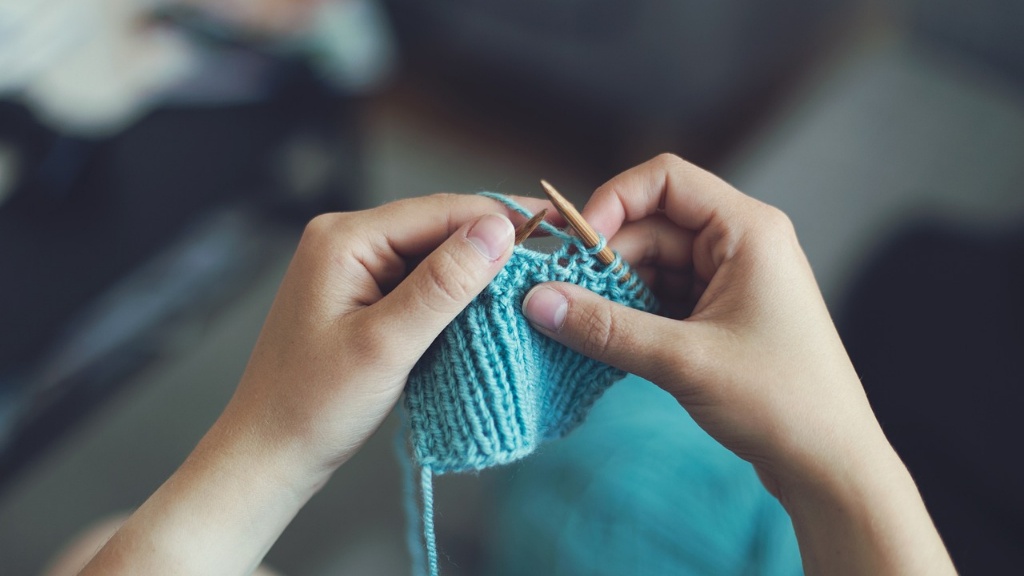A walking foot is a type of foot that is used on a sewing machine, and it has several important roles. A walking foot is usually used for quilting, sewing bulky materials, or fabrics with a nap, and it helps make stitching easier and more accurate. It can also be used to sew several layers of fabrics together and minimize the chance of fabric shifting while stitching. In this article, we will discuss in more detail what a walking foot does, its benefits, and the different types that are available.
The walking foot is similar to other regular feet, but it has a unique feature that allows it to feed the fabric in two parts, at the same rate and in the same direction as the presser foot is stitching. This makes it easier and more accurate to work with bulky and thick materials. The walking foot ensures that the top layers of fabric, as well as the bottom layers, are all fed correctly, resulting in more consistent-looking stitching.
The walking foot can be used to sew many different types of materials, from lightweight fabrics to heavier fabrics like denim, corduroy and even leather. It is often used by quilters or dressmakers who need accuracy and a consistent stitch, and it is also used to sew multiple layers of fabric and prevent fabric shifting. One of the benefits of a walking foot is that it is adjustable and can be set to the correct pressure for the fabric that is being worked with.
There are several different types of walking feet available, and each is designed to work with different types of fabrics. The standard walking foot is best suited for fabrics of medium-weight and stiffness, while heavy-duty feet are best used on heavier and thicker fabrics. The teflon foot is best used on fragile or slippery fabrics that have difficulty staying in place when being stitched.
It is important to use the right type of walking foot for the fabric that is being sewn, as using the wrong foot can result in inaccurate stitches, uneven stitches, or skipped stitches. You should also make sure that the pressure is set to the correct setting for the type of fabric being sewn.
Use of a Walking Foot for Darts
Using a walking foot can also help when making darts, which are used to shape garments to fit the body. Darts involve stitching two pieces of fabric together, and a walking foot helps ensure accuracy and consistency when stitching the two pieces together. Using a walking foot also helps to avoid puckering and shifting of the fabric, which can occur when stitches are done too close together. The walking foot can also be used to sew darts with the fabric folded in half, in order to create a tighter and more professional-looking stitch.
Using a Walking Foot for Uneven Fabrics
A walking foot is also useful when working with fabrics that are uneven, such as knits, chenille and velvet. These materials can be difficult to work with, as they tend to shift and fold easily. Using a walking foot to sew these fabrics will help ensure that the stitches are even and consistent. The walking foot is also beneficial when working with fabrics that have a pile or nap, as the foot helps ensure that the fabric is sewn in a consistent direction and prevents fabric shifting.
Walking Foot for Specialty Stitches
The walking foot can also be used for more decorative or specialty stitches. For example, the walking foot can be used to create topstitching, which is a decorative line of stitching usually done near the edge of the fabric. It can also be used to stitch piping, which is a type of decorative finish used to add color or texture to fabric. The walking foot also helps keep bulky fabrics together when sewing, and is useful when sewing things such as cuffs and belt loops.
Using a Walking Foot with a Sewing Machine
Using a walking foot on a sewing machine is fairly straightforward, although it is important to check the instructions for the specific machine and foot that is being used. Most sewing machines use a snap-on foot, which makes it easy to attach and remove. Other machines use a screw-on foot and require a screwdriver to attach and remove. Once the foot is attached, it is important to adjust the pressure, as this will affect the accuracy of the stitch. Most sewing machines have a pressure adjustment lever or dial that can be used to adjust the pressure of the foot.
Standard vs. Heavy Duty Walking Feet
When working with heavier fabrics, such as denim or corduroy, it is important to choose the right foot. Standard walking feet are better suited for fabrics of medium-weight and stiffness, while heavy-duty feet are more suitable for heavier fabrics. The heavy-duty feet are more durable and the pressure is adjustable, making them better suited for fabrics with a thicker nap.
Advantages of Using a Walking Foot
Using a walking foot has several advantages. It helps make accurate and consistent stitching, which is important for quilting, dressmaking, and making decorative stitches. It also helps minimize puckering and fabric shifting when sewing multiple layers together. Finally, the walking foot helps ensure that the two layers of fabric are fed correctly, resulting in more even stitching.
Conclusion
In conclusion, a walking foot is a type of foot that is used on a sewing machine and is best suited for quilting, sewing multiple layers of fabric, and heavier fabrics such as denim and corduroy. The walking foot helps ensure even and accurate stitching, minimize fabric shifting, and make decorative and specialty stitches. It is important to choose the right type of walking foot for the type of fabric being sewn, and to adjust the pressure according to the fabric’s thickness.



